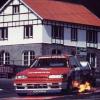An TD06-25g Project (part 1)....
Announcements
-
Similar Content
-
Latest Posts
-
By KKaplumbaa · Posted
I would do it but the spare parts for the engine are either not available or very expensive so I'm thinking of going with SR20





Recommended Posts
Create an account or sign in to comment
You need to be a member in order to leave a comment
Create an account
Sign up for a new account in our community. It's easy!
Register a new accountSign in
Already have an account? Sign in here.
Sign In Now